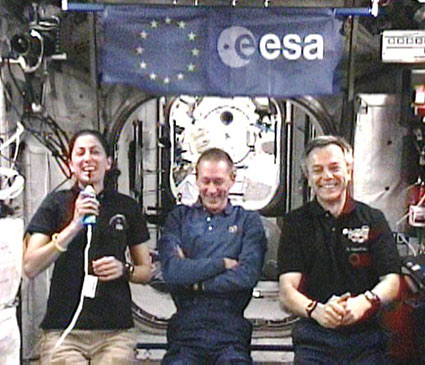Fortunately, the object did not pass within the dangerous zone and the six astronauts were not forced into the Soyuz spacecraft used as lifeboats

A small piece of space debris came within frightening distance of the International Space Station this morning, but not close enough to require the astronauts on the station to get into the Soyuz spacecraft and escape the danger zone. The station currently houses two American astronauts, two Russians, a Canadian and for the first time, the station commander is not American or Russian - the Belgian Frank de Wien from the European Space Agency.
NASA's control center woke up all six astronauts on the station this morning when the agency's surveillance systems noticed that it was approaching, but decided not to carry out the complex and expensive procedure of abandoning it, even temporarily.
The object was expected to pass this morning at 05:48 Israel time at a distance of 500 meters from the station. It should be noted that the alert was received too late to move the station itself using its Russian boosters.
A re-examination of the bone showed that it was a piece of space junk with a diameter of about 5 centimeters and that it would not harm the station. The shortness of the bone makes it difficult to detect and track. Last time, in March of this year, it was a large object - an old rocket engine that required the astronauts to enter the Soyuz, but then there were three astronauts and one spaceship was enough (what's more, they didn't actually detach from the space station), now that the crew is doubled, two spaceships are docked at the station Soyuz.
NASA prefers to move the space station when there is a more than 1 in 10,000 chance of being hit by space debris, however if the object is expected to pass through the area known as the "red zone" and there are not the number of days needed to move the station, the guideline is to find shelter in the escape spacecraft. The red area is a 25 by 25 kilometer box around the station and half of that height above and below the station orbiting the Earth at an altitude of about 350 kilometers at a speed of 28,100 km/h.
On November 16, the shuttle Atlantis is scheduled to take off to the space station with gyroscopes to stabilize the station's trajectory, two logistics components and a lot of equipment.
